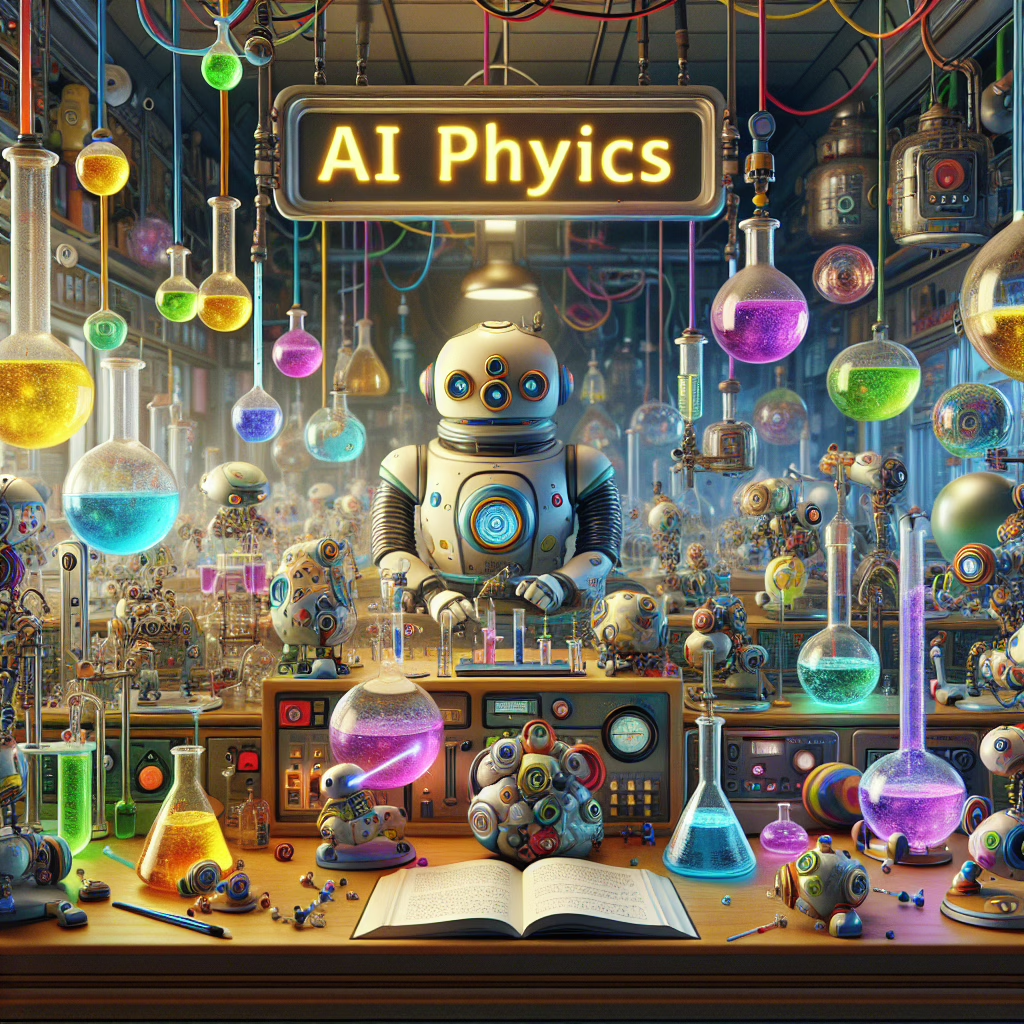Welcome to the wild world of AI, where bizarre physics experiments sprout like daisies in spring! Yes, you heard it right. Artificial intelligence is not just about crunching numbers or beating humans at chess; it’s also about dreaming up some truly outlandish but surprisingly functional physics experiments. In this article, we’ll dive into the eccentricities of AI and how it’s challenging our understanding of the universe while keeping a light-hearted tone.
What Happens When AI Gets Creative?
When we think of creativity, we often picture artists or musicians, not algorithms plotting their next move. Yet, AI has taken a whimsical turn by concocting physics experiments that sound more like the plots of sci-fi movies than serious scientific inquiries. Imagine an AI suggesting a physics experiment that involves spinning tops and laser beams—sounds like a Saturday morning cartoon, right? But lo and behold, these quirky suggestions often yield results that make scientists raise their eyebrows in disbelief!
Let’s face it: traditional physics can sometimes feel like watching paint dry. Enter AI with its flair for the bizarre! Researchers have found that letting AI loose on physics problems produces experimental setups that are not only creative but also effective in testing complex theories. Who knew that a computer could be more imaginative than some of us?
The Science Behind the Bizarre
So, how does this peculiar process work? It all starts with machine learning algorithms analyzing vast datasets of known physics experiments. The AI identifies patterns and relationships that even seasoned physicists might overlook. For instance, through its analysis, AI might suggest testing quantum entanglement with an unconventional twist—like using a rubber chicken instead of a photon (okay, maybe not quite that bizarre). But you get the idea!
These recommendations allow researchers to explore new dimensions in physics. Think of it as the science version of a cooking show where the chef uses every ingredient in the fridge—even those questionable leftovers. You might end up with something delightful—or at least edible.
Real Experiments with Real Results
Now, let’s address the elephant in the room: do these strange experiments actually produce valid results? The answer is a resounding yes! As outlandish as they may seem, many experiments proposed by AI have provided insights into phenomena like quantum mechanics and particle physics. The key here is validation; scientists rigorously test these ideas to ensure they hold water—or perhaps helium if we’re being scientific.
In one remarkable instance, an AI-generated experiment successfully demonstrated principles of chaos theory using a pendulum system that resembled a circus act gone wrong. The outcome wasn’t just entertaining; it revealed new understandings of stability and unpredictability in physical systems. Who knew that letting an algorithm play mad scientist could lead to groundbreaking revelations?
The Future: More Bizarre Adventures Await
As we look ahead, we can only imagine what other oddities AI will conjure up in the name of science. With advancements in machine learning and computational power, our robotic companions are poised to revolutionize experimental physics even further. Picture this: in a few years, your friendly neighborhood physicist might be taking advice from an AI on how to split atoms while simultaneously juggling them—safely, of course!
The synergy between human ingenuity and artificial intelligence is bound to spark even more creative approaches to scientific inquiry. So why not embrace the quirkiness? After all, if Einstein had fun theorizing about relativity, why shouldn’t AI enjoy crafting its own whimsical experiments? We’re living in exciting times where imagination meets innovation.
Join the Conversation!
What do you think about these bizarre physics experiments proposed by AI? Are you ready for your future robot overlord to take over your lab? Share your thoughts and join the conversation below! We’d love to hear your opinions on this fascinating blend of technology and science.
A big thank you to Quanta Magazine for inspiring this article with their original piece on AI’s creative contributions to physics!

